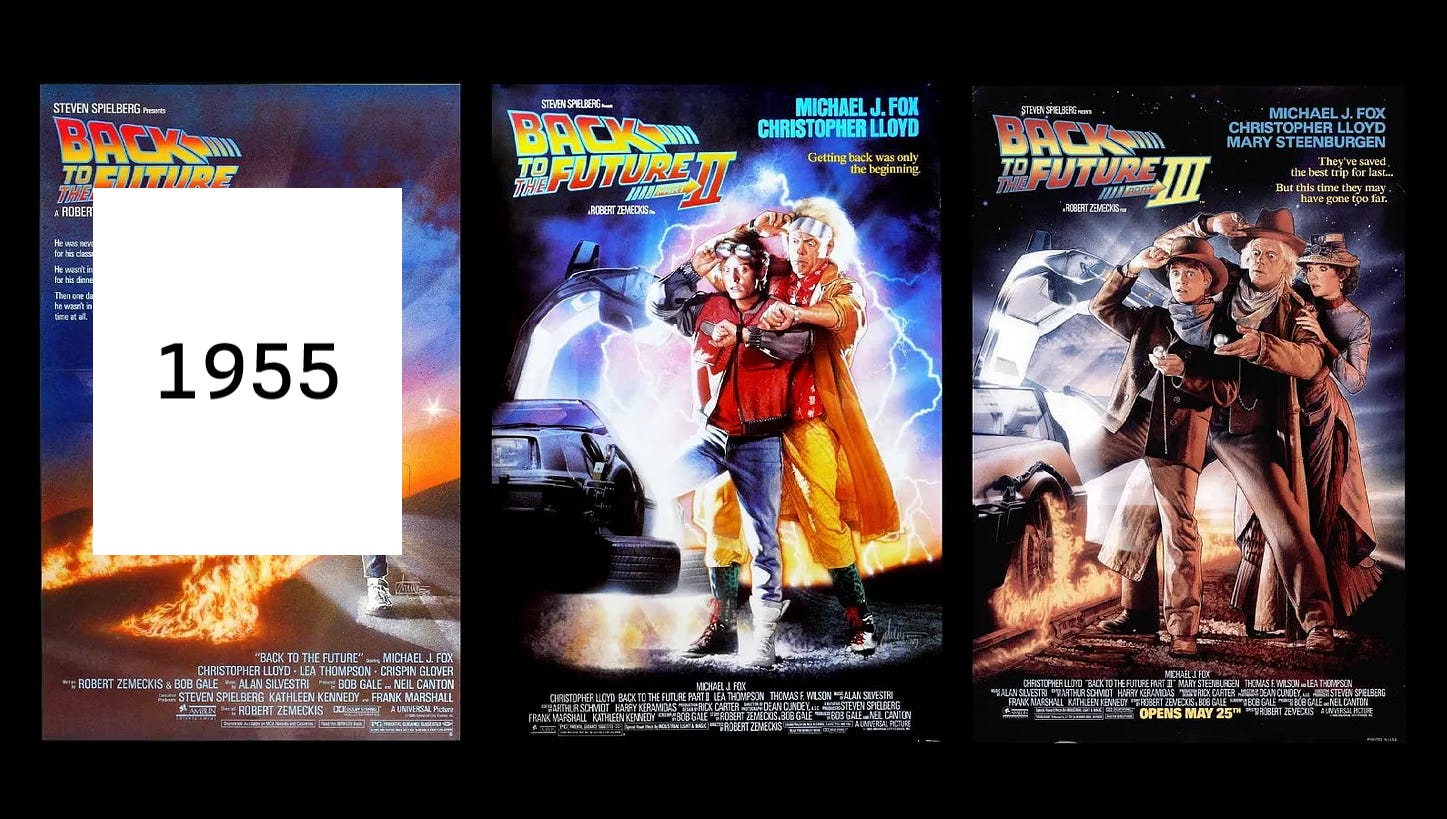What can be said about Back to the Future that hasn’t been said already? It’s (at least in my opinion) a perfect trilogy with great characters and ideas. The impact it has had on cinema and pop culture is huge and has led to many other great time travel stories. However, there’s something that I think makes the trilogy as special as it is, and that is the story structure. The trilogy basically acts as a huge movie split into three, and when you look at it like that, it reveals itself to be way better than expected. If you, for some reason, haven’t seen the trilogy yet, don’t read forward as this post serves as a breakdown/review of the story.
The first movie serves as an introduction to everything. Our characters, time travel, story, etcetera. We are thrown back in time to 1955 and our protagonist, Marty McFly, has to get back to the future (title drop!); this is the first act of the story. 1985, the present in the film, serves as the middle ground for the timeline. After the hijinks that ensue, Marty does, in fact, get back to the future relative to 1955 (AKA: 1985) with a little help from Doc Brown, and the ending sets up Part II, which will bring us to the future relative to the present, 2015.
The second act of the trilogy does, in fact, take us to the future of 2015. However, this is only for the first act of the second film. This is going to get a bit messy. After the future, we go back to an alternate present, 1985, due to future Biff’s antics. After successfully leaving the nightmarish present, Marty and Doc return to 1955, the climax of the first film, to stop future Biff and restore the timeline. However, Doc escapes on his own leaving Marty stranded in the past. This is until we find out Doc is alive and well in the wild west.
The final act of the trilogy leaves Marty to return to the wild west and save Doc from his death. This acts as a parody and homage to the western genre, and Marty and Doc end up save and live happily ever after. Now, you may be wondering why this makes the trilogy special, and that’s because of that seeming mess of a second act. Squishing the future, present and past between the two ends of the past makes the back and forth satisfying. And to prove this, I have made a timeline.
In this, admittedly, pretty confusing timeline, red represents the first film, blue the second and green the third. As you can see, the red simply jumps back and forth between 1985, to 1955, back to 1985. A pretty closed loop. Then, the second goes from 1985 to 2015, back to 1985 and back to 1955. This goes from the middle to the end, back to the middle and to the “start”. Part III goes to the actual start, 1885, and ending it off in the present. The structure isn’t linear, but with Part II onward, it technically is. And that’s why the trilogy is great. This post is not my best writing, but I tried my best to explain why I love this structure.








